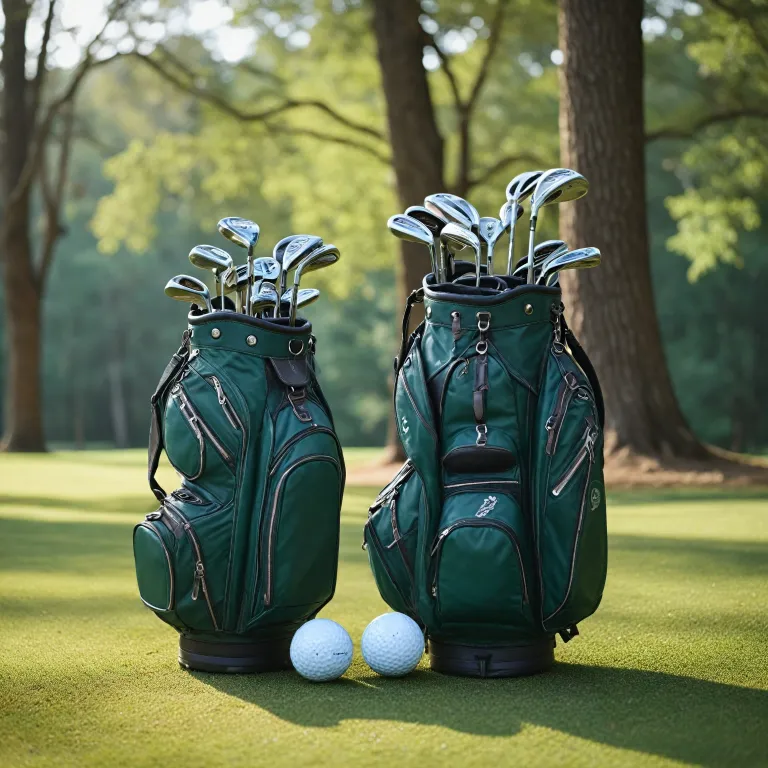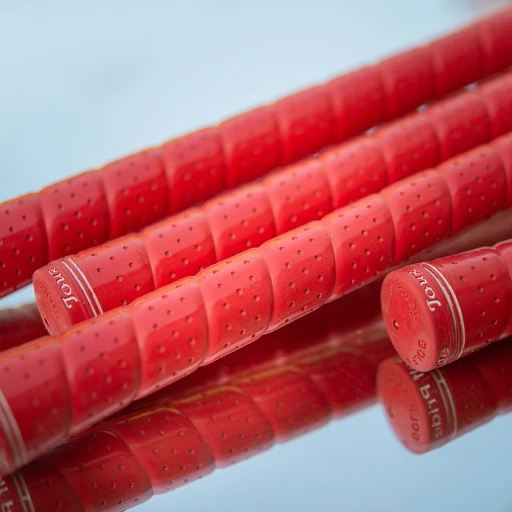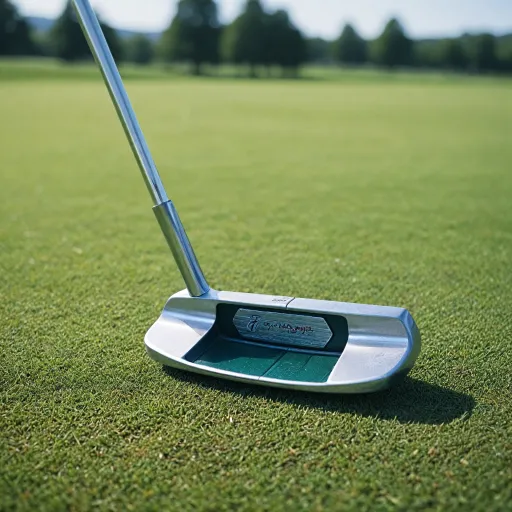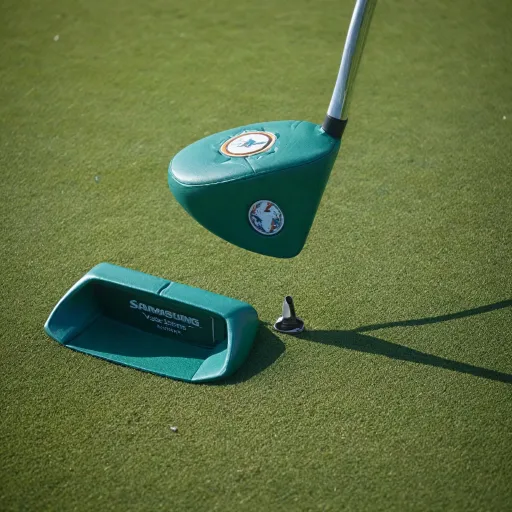
The Rise of Eco-Conscious Golfing
The Shift Towards Green Golfing
In recent years, the golfing community has seen a noteworthy transformation. An increasing number of players, regardless of skill level, are prioritizing eco-conscious practices on the course. Golfing enthusiasts in the United States are embracing this shift, appreciating not just the game, but also the lush, green expanses of their favorite courses.
This trend is evident in the choices golfers make, from the golf club they swing to the golf grips they select. These decisions are not only about enhancing performance but also reducing their environmental footprint.
Moreover, sustainable golfing is becoming a prevalent discussion in pro shops and during tee time. Golf courses have become environmentally mindful, creating putting greens and fairways that harmonize with nature. The courses are designed to conserve water and protect surrounding wildlife, making a positive impact on the environment while players enjoy their rounds.
The PGA tour and other prominent tournaments are also recognizing these initiatives, showcasing golf courses that exemplify sustainable practices. This movement not only enhances the natural beauty of the course but also sharpens the focus on responsible golfing.
As we explore eco-friendliness in luxury golf gear across various greens, it's clear that the rise of sustainable golfing is not just a trend, but a promising path forward for the sport.
Materials Matter: Sustainable Innovations
Greener Choices for Golf Equipment
In the golf world, the materials chosen for clubs, balls, and other gear play a pivotal role in both performance and sustainability. A growing trend among manufacturers is the shift towards using more eco-friendly materials while maintaining the luxury and performance that seasoned golfers expect.
Golf ball manufacturers are leading the charge by experimenting with biodegradable materials that promise the same durability and distance as their traditional counterparts. The move towards sustainable golf balls helps minimize the environmental impact of lost balls, which is a common occurrence on any course.
Similarly, golf club producers are incorporating recycled metals and innovative composite materials to create clubs that are high-performing and sustainable. The use of reclaimed materials not only reduces the carbon footprint but also offers golfers a competitive edge by maintaining the performance standards they are accustomed to.
A golf course's commitment to sustainability extends beyond gear to include the practice areas, like putting greens, where eco-friendly solutions are also gaining traction. For instance, synthetic greens made from recycled materials not only conserve water but also provide a consistent putting surface for golfers to refine their technique and improve their handicap.
For golf enthusiasts looking to embrace this green revolution on the course, understanding the significance of these materials and their impact on their game is crucial. Selecting the right equipment not only enhances a player's score but also contributes to a more sustainable future for golf.
For those interested in getting the perfect fit for their golf gloves, which can also play a role in sustainable golfing practices, this guide to golf glove sizing offers valuable insights.
Luxury Meets Sustainability: Top Brands Leading the Way
Brands Pioneering the Sustainable Golf Movement
The luxurious world of golf is no stranger to innovation, especially when it comes to integrating sustainable practices with high-end performance. Top brands have come to the forefront, combining environmental concerns with the elegance and precision that the golfing world demands. These companies are setting the bar for other industries by showcasing that luxury need not be compromised for sustainability. One standout example is the incorporation of biodegradable materials in their products. Such advancements not only enhance the player's experience on the course but also contribute to the environment by reducing waste. For instance, golf clubs made from recycled metals and sustainably sourced woods are gaining popularity. These materials help players hit the ball with precision while ensuring their game is environmentally friendly. In addition to equipment, brands focus on apparel crafted from organic and recycled fibers. These garments are designed to perform at any level of play while minimizing the ecological footprint. Indeed, no detail is too small when it comes to promoting an eco-conscious lifestyle even in a game as prestigious as this. Let's not overlook the course itself. Courses are integrating sustainable practices with the same vigor. From using reclaimed water for irrigation on putting greens to applying organic fertilizers, many are now offering players an eco-friendly tour around the 18 holes. Moreover, companies are achieving harmony between luxury and sustainability through innovation in golf accessories. Whether it's bags made from renewable resources or balls crafted to break down safely in nature, the modern golf product landscape is fast becoming a cleaner, greener domain. For readers seeking to continue the eco-friendly trend, you might explore the refined specificities of luxury golf gear, including unique accessories and elegant headcovers, which perfectly blend function with environmental mindfulness. To dive deeper into how these accessories can elevate your game, consider checking out how exquisite golf putter headcovers can add a new dimension to your putting game.The Impact of Eco-Friendly Golf Courses
Green Courses Making a Difference
The environmentally friendly movement in the golfing world is not just limited to gear; golf courses themselves are swiftly adopting green practices that significantly impact the environment. These courses focus on sustainable management techniques that aim to minimize water usage, reduce pesticide application, and promote habitat restoration. For instance, eco-friendly golf courses incorporate native plants and grasses, which require less water and fewer chemicals, creating a more sustainable ecosystem. By opting for these indigenous varieties, courses see improved water conservation, a crucial component in maintaining vibrant greens and fairways, especially in areas susceptible to drought. Moreover, many courses are now utilizing reclaimed water systems. This allows them to efficiently reuse water resources and support the lush landscapes essential for quality play without depleting local reserves. This practice also enhances the overall score by maintaining top-tier course conditions. In addition, golf course architects are designing layouts that naturally integrate the terrain, reducing the need for excessive alterations. This shift not only preserves the natural beauty of the location but also minimizes the environmental impact during construction. Pioneering these concepts in the United States, certain courses have successfully combined luxury with sustainability, offering players a chance to experience a guilt-free game. As more courses adopt these green practices, golfers are presented with the opportunity to enjoy the game while significantly reducing their carbon footprint. Ultimately, as the demand for green courses increases, players at all skill levels can look forward to playing on courses that prioritize the environment without compromising on quality or playability. Whether you're honing your putting strokes on the manicured greens or hitting the ball down the fairway, these eco-conscious approaches ensure the future of the game remains bright and sustainable.Balancing Performance and Eco-Friendliness
Finding the Sweet Spot Between Performance and Eco-Friendliness
In an era where environmental sustainability is on top of mind, golfers are increasingly seeking products that offer a blend of performance and eco-consciousness. A common concern is whether these sustainable innovations compromise play performance. Fortunately, the industry has seen significant advancements in green golf technologies that do not sacrifice quality.
When stepping onto the tee box, players will notice that eco-friendly golf balls are designed to perform just as well, if not better, than traditional ones. Modern eco golf balls provide excellent ball flight and have been developed to maintain consistent putting strokes on the greens. Furthermore, players of all skill levels can enjoy a seamless transition to using these environmentally conscious alternatives.
Moreover, golf courses are increasingly incorporating sustainable practices without affecting the golfer's experience. Course architects are embracing sustainable irrigation systems and organic maintenance methods which preserve play quality while reducing environmental impact. It is now possible to master the game with the same passion and precision, knowing that your favorite golf course isn't harming the environment.
Golf clubs have also seen a sustainable transformation, with brands innovating around renewable materials while maintaining the precision and balance needed to improve one’s handicap. Whether on a links golf course or your backyard putting green, these clubs deliver excellent performance.
Indeed, balancing performance and eco-friendliness in the realm of golf is no longer a challenge but rather an opportunity for players to enhance their game while supporting the planet. As these developments continue, the future of green golfing looks promising with more golfers choosing sustainable options without compromise.













